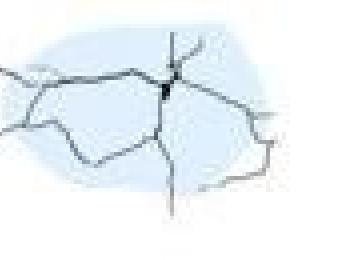
Interior walls often fall victim to scuffs, layers of dirt, grime, fingerprints and even mould. This article provides a simple but comprehensive guide to the different methods for cleaning interior walls with paint, wallpaper and brick surfaces.
How to clean small spots and scuffs
For smaller marks, spot cleaning can be performed using a mild detergent and a soft clean cloth or sponge. Without getting too fussy, it's best to use a light-coloured sponge for light-coloured walls, and a darker sponge for dark walls, as sponges have a tendency to leave residue behind. Use nylon socks instead of sponges or cloths on textured walls (like brick walls), as they're less likely to tear apart.
Preparing to clean the walls
For larger sections of wall, a bit of preparation will make your job easier and helps prevent a few common mishaps. Before washing walls, make sure you have your equipment ready and always start with walls that have been dusted down with a soft, clean broom.
Performing a patch test on an inconspicuous section of your wall is a good idea, to make sure your surface won’t be permanently marked or stained by washing. Once the test area has dried and is looking OK, you can proceed with the rest of the wall. Start by removing any decorations or furnishings from the wall or walls you wish to clean. Approach Blu-Tack and similar adhesive putties with caution - they are notorious for taking paint with them when peeled from walls. Move any furniture to ensure you have enough space to approach an entire wall at once. Protect your floor by laying down some towels, newspaper or plastic sheeting.
Doing the dirty
Once the dust and cobwebs are gone, it’s time to start washing. For an interior paint-finished wall, make sure you have the following items:
- A ladder and sponges (or a long-handled sponge mop)
- Sugar soap (or another non-abrasive cleaning agent of your choice)
- Two buckets
- Soft towels for drying walls
Fill one bucket with a diluted detergent solution and one with plain water. Starting at the top of the wall, dip your sponge or sponge mop into the detergent bucket and concentrate on gently cleaning small sections of the wall. Excessive scrubbing has the potential to lift paint. Dip the sponge in the plain water and rinse the washed section, then gently pat the area dry with a soft towel to prevent drips. Drips of dirty water can leave more marks on your walls, which can be frustratingly difficult to remove. Continue with the rest of the wall, changing the water when it becomes dirty. If your walls are mouldy, try spraying them with lightly with a mixture of clove oil and water - this will kill mould and prevent it from returning. If this fails, consider using a commercial mould killer.
How to clean wallpaper
Wallpaper can be cleaned using the same method as above, using as little water as possible on the sponges and being very gentle. Cleaning wallpaper can damage it, so be careful and only clean it if it's absolutely necessary.
How to clean brick walls
Brick interior walls require some slightly different cleaning agents and tools. To clean them, you will need:
- A ladder
- Two buckets
- Water
- Sugar soap
- Soft cloths
- A brass wire brush
- Some salt
In a bucket, make a paste using equal parts of sugar soap and salt and enough water to make it creamy. After a successful patch test, use a cloth to smear the solution over the bricks in a fairly thin film. Once this solution has been applied, scrub it into the bricks with the brass wire brush. Allow this to sit for ten minutes and then remove with a wet cloth, changing water when necessary.
Extra help for really dirty bricks
If your bricks are particularly dirty, you can try following the steps just listed with an additional application of a solution of 1 tablespoon of boric acid diluted in four litres of water.
Leave this solution to soak into the bricks for 2 minutes and then rinse with a wet cloth.
The sheer size of many interior walls can make washing them seem like a daunting job. Even worse is the frustration of walls that end up looking worse than when you started! With the right tools and preparation however, you can achieve great results with a minimum of effort.



